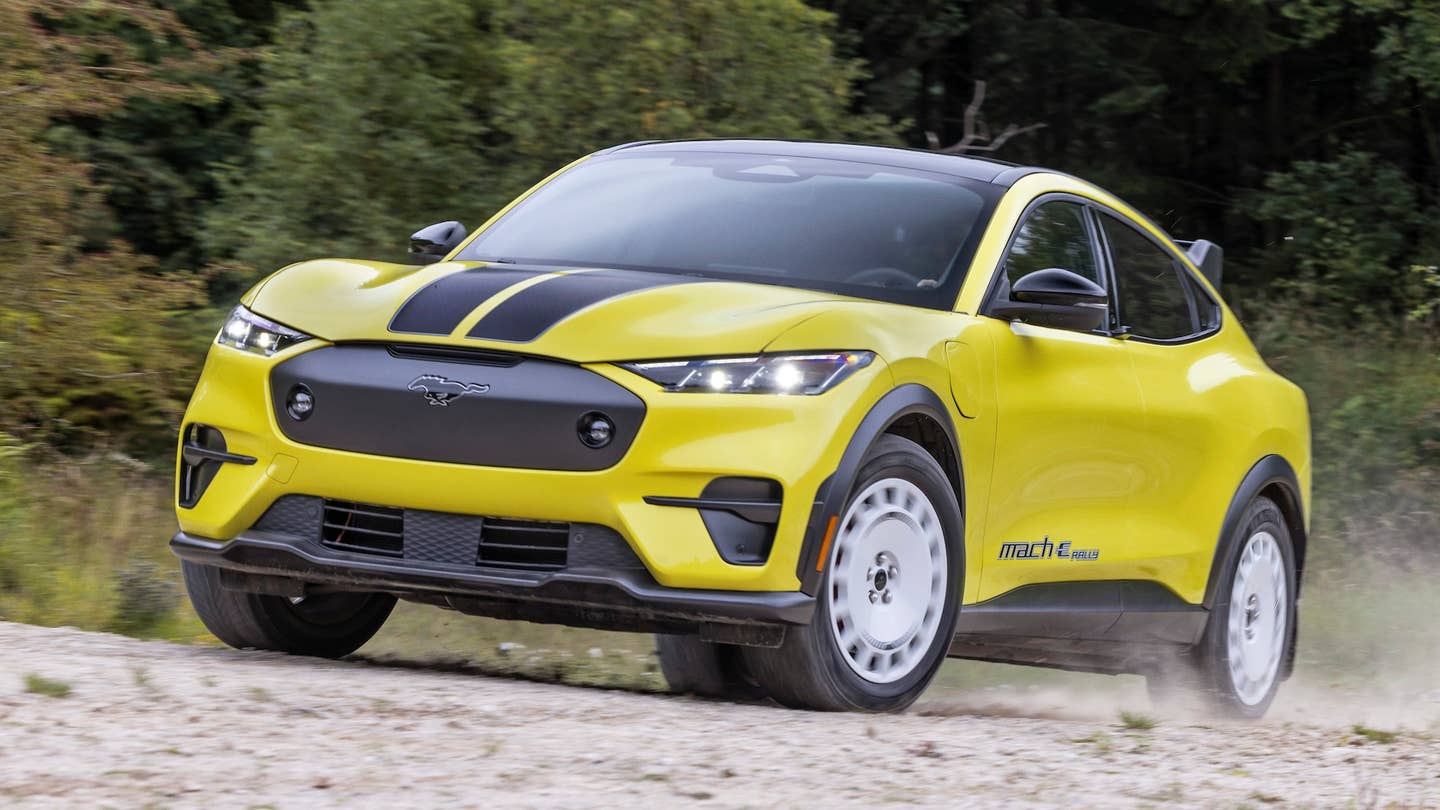Forget range anxiety, the real hurdle is bank anxiety.

At the start of this year, the Ford Mustang Mach-E wasn’t just one of the slowest-selling EVs in the U.S., it was one of the slowest-selling new cars period. Things got to the point where Ford resorted to extreme discounts to sell them, and their effects reaffirmed something that’s becoming increasingly obvious: EV demand is held up by poor affordability.
2024 Ford Mustang Mach-E Rally. Ford
Speaking to data analysts at Cloud Theory, Automotive News reports the Mach-E’s sale rate has basically tripled, and that inventory has fallen by nine percent over the past month. Specifically, the Mach-E’s turn rate (described as the percentage of cars sold in a given time frame) has swelled from seven to 33 percent. Ford also noted a 64-percent sales increase in February, though that was up from a January where sales had halved. The Mach-E’s turn rate also reportedly still falls short of the 45-percent industry average.
Still, the Mach-E’s bounceback gives useful insight on the nature of last year’s hotly debated EV sales plateau. It suggests the demand problem was just an oversupplied premium market, and that there’s untapped demand at a lower price point. Of course, Ford is already working on an EV targeted at that segment with its “skunkworks” EV team, which will be key to challenging Tesla’s sales volume and the looming threat of Chinese EVs. As hard as the federal government tries to keep Chinese EVs out, it’s a matter of time before they find their way in. The best defense, it seems, is a cheap EV of our own.
Got a tip or question for the author? You can reach them here: james@thedrive.com


